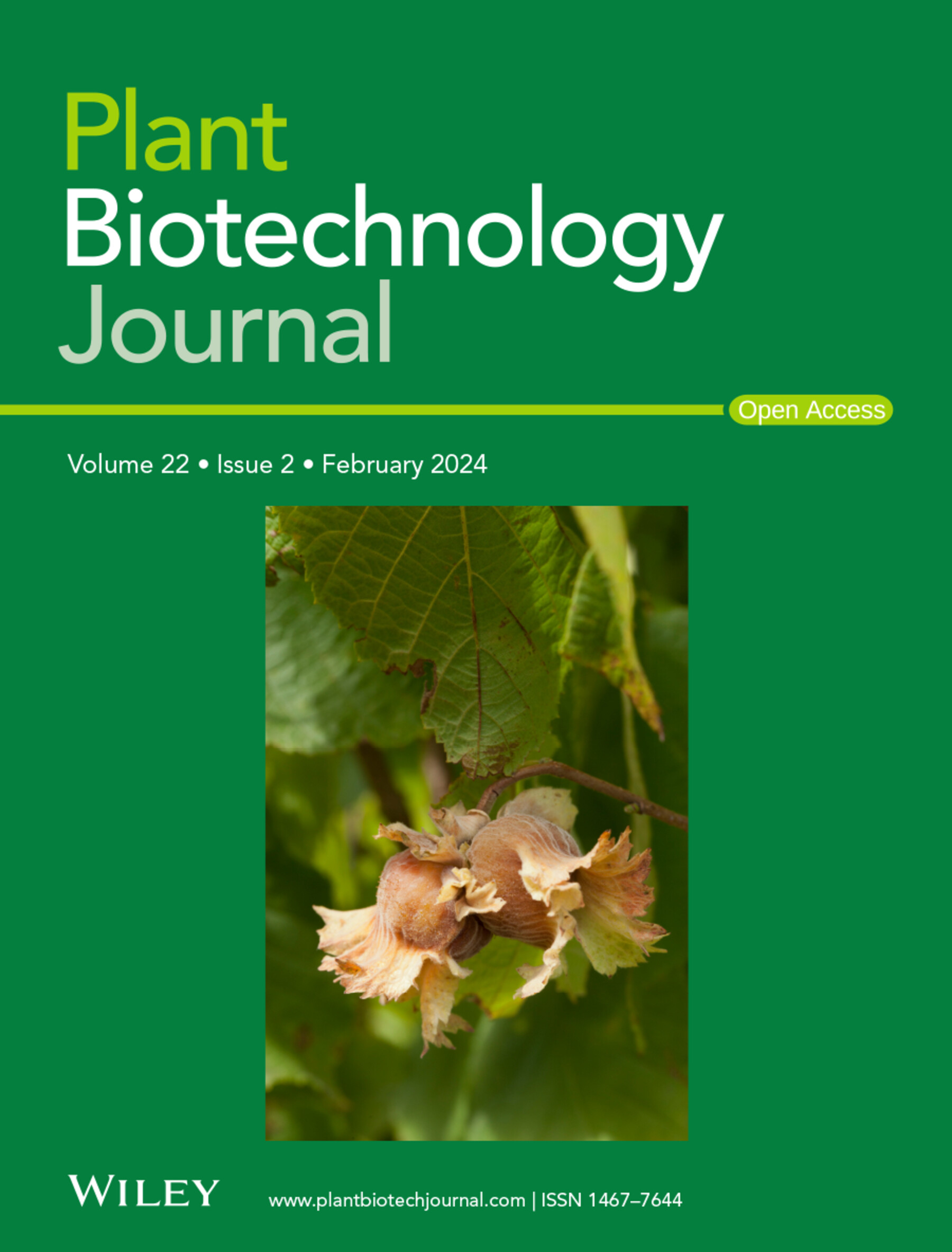Localising enzymes to biomolecular condensates increase their accumulation and benefits engineered metabolic pathway performance in Nicotiana benthamiana
IF 10.1
1区 生物学
Q1 BIOTECHNOLOGY & APPLIED MICROBIOLOGY
引用次数: 0
Abstract
SummaryThe establishment of将酶定位到生物分子凝聚物中增加了它们的积累,并有利于烟叶代谢途径的工程性能
benthamiana作为一个强大的生物工厂的建立,由于产品毒性和靶蛋白/引入酶的蛋白水解降解等问题而变得复杂。在这里,我们研究生物分子凝聚物是否可以用来解决这些问题。我们利用合成模块支架的瞬时表达在拟南芥叶片中构建了生物分子凝聚体。所产生的凝聚物的体内性质与它们是具有多组分相分离系统的典型热力学特征的液态体相一致。我们发现,体内凝聚物的酶募集导致一步和三步代谢途径(分别是柠檬酸酯生物合成和聚3 -羟基丁酸酯(PHB)生物合成)的产量增加数倍。这种产量的提高可能有几个原因,包括改善酶动力学,代谢物通道或通过在凝聚物中保留途径产物来避免细胞毒性,这在PHB中得到了证明。然而,我们也观察到,当它们被冷凝物靶向时,积累的酶的数量增加了几倍。这表明酶在凝聚液中比在胞质溶胶中自由扩散时更稳定。我们假设这种稳定性可能是增加途径产物生产的主要驱动因素。本研究结果为利用生物分子凝聚物在植物代谢工程中的应用奠定了基础,并推动了benthamiana作为一种多功能生物工厂的工业应用。
本文章由计算机程序翻译,如有差异,请以英文原文为准。
求助全文
约1分钟内获得全文
求助全文
来源期刊

Plant Biotechnology Journal
生物-生物工程与应用微生物
CiteScore
20.50
自引率
2.90%
发文量
201
审稿时长
1 months
期刊介绍:
Plant Biotechnology Journal aspires to publish original research and insightful reviews of high impact, authored by prominent researchers in applied plant science. The journal places a special emphasis on molecular plant sciences and their practical applications through plant biotechnology. Our goal is to establish a platform for showcasing significant advances in the field, encompassing curiosity-driven studies with potential applications, strategic research in plant biotechnology, scientific analysis of crucial issues for the beneficial utilization of plant sciences, and assessments of the performance of plant biotechnology products in practical applications.
 求助内容:
求助内容: 应助结果提醒方式:
应助结果提醒方式:


